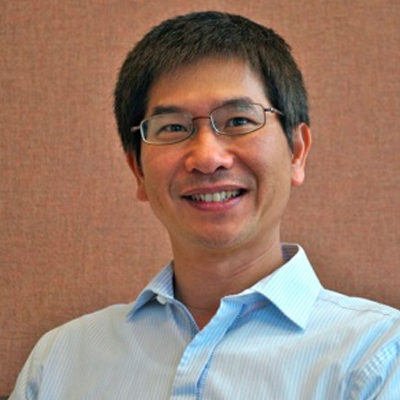Using interdisciplinary approaches to develop technologies with real-world applications
The past twenty years have witnessed remarkable advances in fundamental neuroscience research and next-generation neurotechnologies. In the past 15 years alone, over half a million citable documents were published in 300+ neuroscience-related journals. The neurotechnology industry alone draws over $140 billion investment annually, yet despite these world-wide investments, we have not seen the potential benefits fully realized. The most realistic cause for this inefficiency is the fundamental differences between laboratory-based and naturalistic human behavior. Thus it remains unclear how well current knowledge of human brain function translates into the highly dynamic stresses of activity in the real world. Dr. Tzyy-Ping Jung, Co-Director of the Center for Advanced Neurological Engineering at the University of California, San Diego, is developing technologies that work with patients, allowing for information of the brain to be extracted and analyzed beyond the well-controlled settings of a laboratory in a number of real-world environments. This work is highly interdisciplinary, combining the efforts of neuroscientists, clinicians and physicians, and neuroscientists all within the same lab. The combination of various fields of research allows for students and staff members across many different disciplines to focus their skills on the same problems, resulting in the development of translational technologies that could have immense future impacts on clinical research and practice in neurology, psychiatry, gerontology, and rehabilitation medicine.
Dr. Tzyy-Ping Jung, Associate Director of Swartz Center for Computational Neuroscience (SCCN) and Adjunct Professor in the Department of Bioengineering at the University of California, San Diego, is developing technologies for better imaging of brain activity, improved diagnosis of neurological diseases, and for general maintenance of neurological health beyond the laboratory. He has assembled a uniquely multidisciplinary team consisting of engineers, clinicians, physicians, and neuroscientists allowing the lab to cover varied topics many other labs cannot. The ultimate goal of this research is to integrate the expertise in cutting-edge methods in neural engineering and computation with fundamental scientific and clinical knowledge of the nervous system to improve the diagnosis, treatment, and prevention of neurological diseases. Dr. Jung and colleagues are achieving this by creating a number of technologies related to EEG analysis, or the studying of brain waves across the scalp, and its relationship to the brain computer interface, a tool used to assist or improve cognitive ability in the brain. He and colleagues are creating tools to advance neuroscience research and develop novel methods and strategies for improving the prevention, treatment, and diagnosis of neurological diseases and injuries. Some of these technologies include dry and wireless sensors for EEG, miniaturized and portable EEG systems, and computational advances. In addition to these physical tools, SCCN has created a downloadable package called "EEG lab" which is freely distributed throughout the Internet and designed to serve the neuroscience research community; the package has already been downloaded by over 110,000 different groups and individuals. Beyond developing new and improved technologies, Dr. Jung is pursuing advances in cognitive neuroscience by exploring the brain through fundamental brain studies and plasticity.
Dr. Jung has over 30 current research projects pertaining to the brain CPU interface, wireless telemetries within the brain, a miniaturized battery power system for internal devices, online real-time signal processing, and crowd computing:
-
Dr. Jung is developing tools to explore different opportunities and applications within the brain. He and colleagues are creating mobile and portable dry and wireless EEG technologies for general use outside of the laboratory. These sensors have the advantage of being both dry, meaning no special skin preparation is needed before application, and portable and wireless, granting mobility to the user. These technologies will allow assessment of brain activities of unconstrained participants within real-world environments.
-
The brain computer interface (BCI) is a direct communication pathway between the brain and an external device typically used to assist, augment, or repair human cognitive or sensory-motor functions. Dr. Jung is exploring the applications of this tool in the clinical setting. Roughly 11% of the population suffer from migraines, and Dr. Jung and colleagues are developing apparatus and methods to detect the propensity of migraine attacks based on pervasive and mobile BCIs. The BCI is also applicable for assessing visual field loss in conditions such as glaucoma. A portable and low-cost system based on smartphones would allow patients to track their vision loss at home over time. This device would require daily use after diagnosis to determine at what rate patients are losing vision ability. These are only two specific applications of the BCI, though Dr. Jung is exploring many other uses.
-
Dr. Jung is investigating the neural mechanisms of learning and education, and its applications for improving these processes. He is working in collaboration with faculty members of the Department of Education at National Chiao Tung University (NCTU) in Taiwan to understand how students perceive scientific concepts in biology, chemistry, and physics, and how their performance associates with EEG activity. His collaborator, Hsiao-Ching She of NCTU, is designing various computer-aided programs that ultimately will try and predict student performance in mathematical learning and scientific problem solving. This project has three goals: 1. explore brain activity during learning, 2. look at biomarkers of poor vs. good performance in learning and education, and 3. improve student performance by using the BCI device. This project is directed at understanding the biomarkers that influence or impede mathematics and science learning and using those findings to develop interventions to correct or improve brain patterns associated with learning.
-
Dr. Jung is developing his technologies beyond the lab to help local companies bring his tools to market. He is working with local startups to have EEG data recorded and stored in real world environments, such as at home, school, or the office. This includes the sensors and hardware of the BCI, as well as developing signal processing tools for an online real-time data processing pipeline to extract useful information from daily-wear EEG systems around the globe. This extends to crowd-computing tools used to access, record, and process data from patients anywhere around the world. These tools would allow Dr. Jung to use smartphones to access live data through the Internet from patients in, for example, Taiwan, greatly increasing international accessibility to professional medical care.
Bio
Dr. Jung was ultimately driven to become a researcher by his innate curiosity. He enjoys observing and understanding how processes get refined and further developed and how new theories about these processes will lead to new ways of thinking about the world. This way of thinking applies to a number of disciplines. Within the biological realm, his curiosities lie in knowing how organisms, particularly with regard to the central and peripheral nervous systems, function or evolve. He also has technical interests in exploring how an idea for a new piece of hardware or a device is conceived, developed, and refined. In trying to blend these varied interests, Dr. Jung discovered that bioengineering best bridges the gap between engineering, biology, and medicine; it is exactly this type of research that best motivates him.
This led to background training in electrical engineering, the discipline in which he completed his bachelor's, master's, and doctorate degrees. Upon joining the Salk Institute for Biological Study at the University of California, San Diego, Dr. Jung began focusing his skills on neuroscience problems. He has enjoyed the addition of neuroscience to his already varied disciplines of research. It was at this institute that Dr. Jung's group was the first to propose or pioneer brain source separations for biosignal processing, for which he won a pioneer award for unsupervised learning in 2008. He was also elevated to a Fellow of IEEE for the contributions in 2015.
After talking with Dr. William Mobley, Chairman of Department of Neuroscience at UCSD and a member of the National Academy of Sciences' Institute of Medicine, Dr. Jung learned that there is a lack of communication between the many engineers and neuroscientists that are studying the brain, and the clinicians that are working with patients. Therefore, many researchers are unaware of the specific tools clinicians desire, and without that connection the patient will see no real benefit. To foster synergetic collaborations among scientists, engineers, clinicians and industry, Drs. Jung and Mobley formed a new center, the Center for Advanced Neurological Engineering under the Institute of Engineering in Medicine (IEM) in 2010. They are working to commercialize and privatize the technologies, so that society can really benefit from his technological breakthroughs. He is passionate to learn how people can benefit from his studies, research, and the technologies he develops, and his background experience in both basic and applied research, and the commercialization of technology, gained through running a number of small technologies, makes Dr. Jung the ideal candidate for this task. He is working on many aspects of different problems in the hopes that his new principles and technologies will really benefit patients and change the world.
Beyond the lab, Dr. Jung has taken responsibility for further developing his research tools for use in clinical or at-home settings. In addition to working with three centers on campus, he helped found a company in 1998 called SoftMax that is leveraging the techniques developed at the Salk Institute for Biological Studies to develop products that will benefit people. The technology promoted by this company was acquired by Qualcomm in 2007. He is also an officer at a small company called Sigmed that is collaborating with UCSD and aimed at fundraising for a technology company.
In the News
Publications
Videos
Awards
Elevated to Fellow, IEEE, 2015
Distinguished Alumni Award, National Chiao Tung University, Hsinchu, Taiwan, 2012
SPIE Unsupervised ICA Learning Pioneer Award, 2008
Patents
A Cell-Phone Based Wireless and Mobile Brain-Machine Interface
(US patent pending, PCT/US2011/038458), 2011
Brain-machine Interface for communication with mechanically ventilated patients
(US provisional patent, No. 61/555,220), pending


